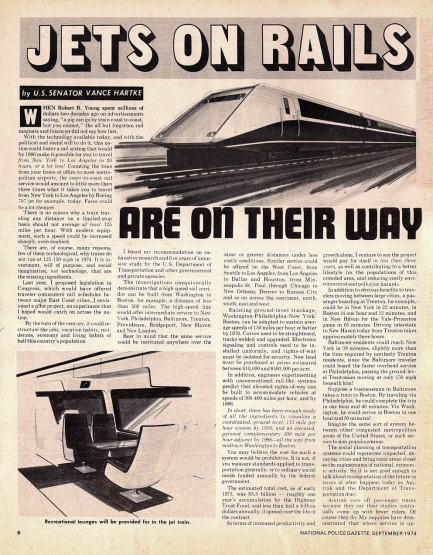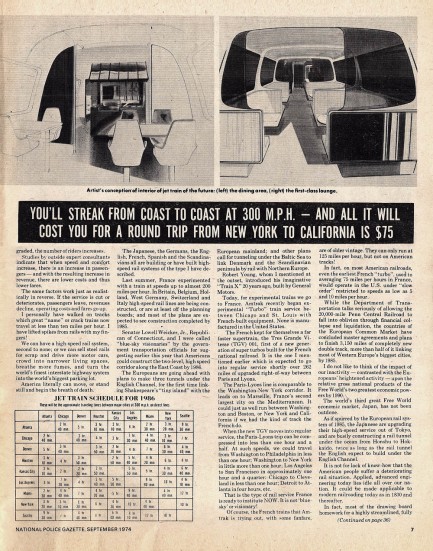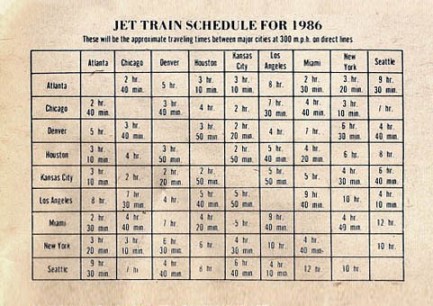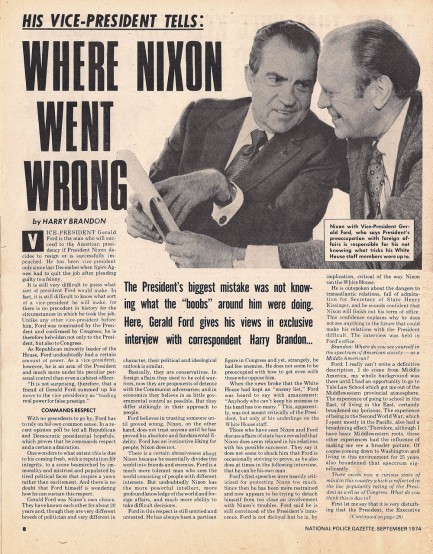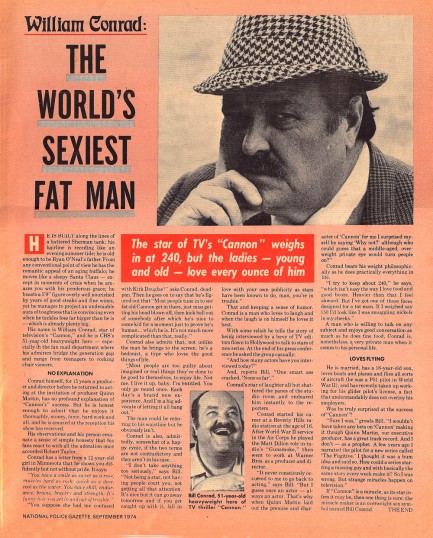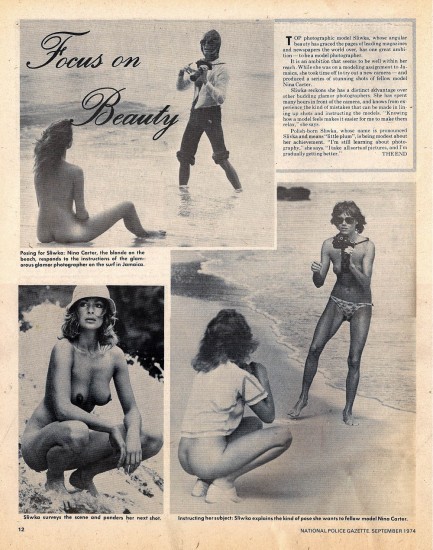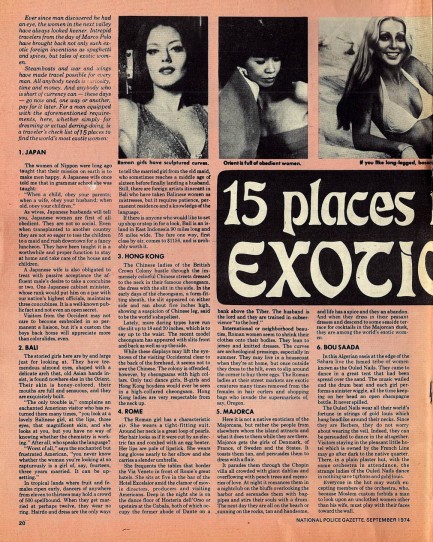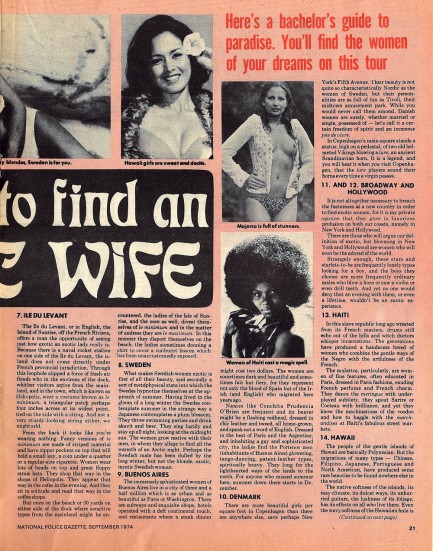| Vintage Pulp | May 20 2013 |


Oh, the poor National Police Gazette. By 1974 it was impossible for the editors to keep claiming Hitler was still alive and hiding out in Argentina. If he’d ever been there he was long dead. Castro was still around, of course, but it was pointless to keep pretending the U.S. was going to send an armada to take back Cuba. Mao was a useful foil for a few years, but somehow he just didn’t resonate the same way for readers. So the magazine turned its focus to pettier intrigues, dogging the Kennedy clan and hoping to move issues by featuring bikini models on its covers. How the mighty had fallen. Launched all the way back in 1845, the oldest magazine in America was now uninspired and out-of-touch with 1970s readers. In this entire issue only a few pages were even worth scanning. Teddy Kennedy, Susan Shaw, Felicity Devonshire, Sliwka… and killer catfish, all below.
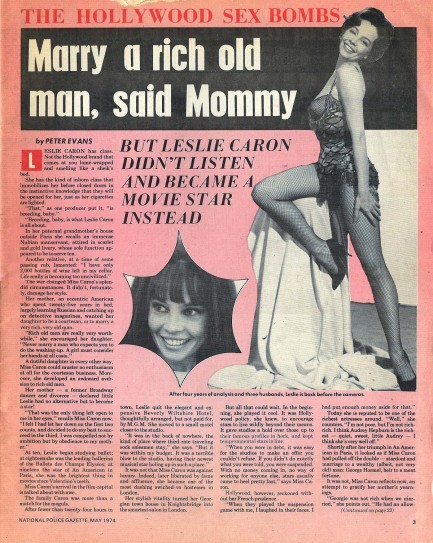
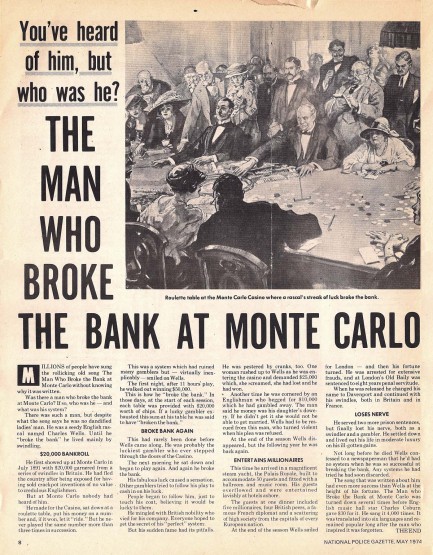
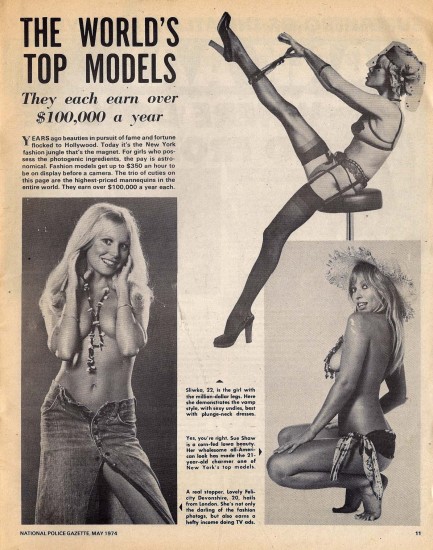

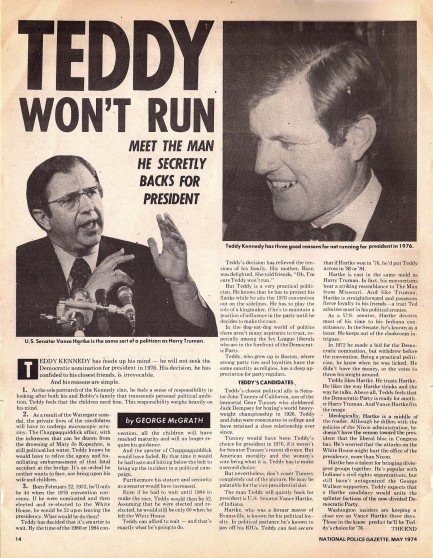
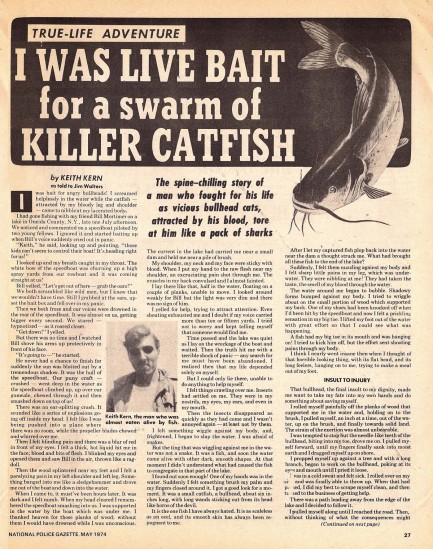
| Intl. Notebook | Sep 9 2011 |

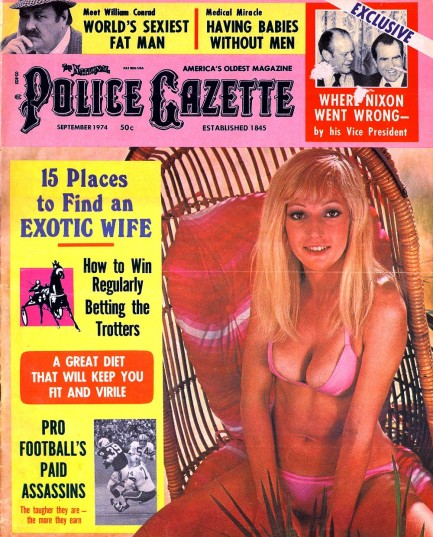
This National Police Gazette from September 1974 treats us to several great stories, including an article claiming that Richard Nixon’s only crime was not knowing what the “boobs” around him were doing. Ah yes, the old rogue subordinates excuse. Works great for presidents and corporate heads, but for you, well, not so much. Elsewhere in the issue you get an article on how to score an exotic bride, and sharp-eyed readers may notice that the “Haitian” bride is actually American actress Gloria Hendry, who we featured a couple of weeks ago.
But what really caught our attention in this Gazette is the article by U.S. Senator Vance Hartke about cheap, superfast rail travel. It’s filled with promises and optimism, steeped in for-the-good-of-the-people rhetoric, and even includes a sample 1986 cross-country timetable. Imagine it. Within twelve years Americans would blaze overland at 300 mph, and this rail system, envy of the world, would be clean, pleasant, and cheap—a mere $75 coast-to-coast.
A funny thing happened on the way to this future—politics that used to frame tomorow in terms of the things that were possible changed so that it now frames tomorrow in terms of what it isn't possible. Although limited high-speed rail service has finally been built in the U.S., Americans who want to experience train travel at the velocities cited in Hartke's dreamy article have to visit other countries. As to whether a true super fast system will ever be built in the U.S., we wouldn’t venture a guess either way, but it certainly is thought provoking to read what some people thought the near future would bring.